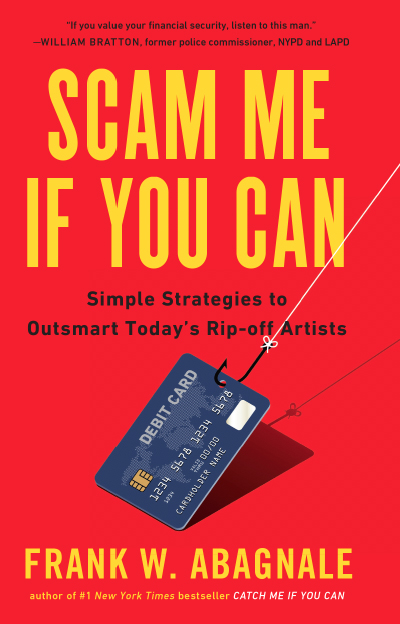Scam Me If You Can: Simple Strategies to Outsmart Today's Ripoff Artists
by Frank W. Abagnale
BUY THIS BOOK NOW!
Amazon
Barnes & Noble
Book-Pal
(50% off plus free S/H on bulk orders)
CEO Read
Indie Books
Book Description
Every year, millions of American consumers — nearly 7 percent of the population — become victims of fraud. Here, Frank Abagnale (the former con man behind the Catch Me If You Can story and co-host of AARP’s podcast, The Perfect Scam) reveals the methods used by the world’s most skillful con artists to steal billions of dollars each year from unsuspecting consumers. Beyond exposing the scams and their perpetrators, this book’s primary purpose is to arm you with the knowledge and the latest tools you need to stay a step ahead of the illegal schemes bombarding you constantly in a multitude of ways—via your doorsteps, mailboxes, telephones, and ubiquitous electronic devices.

